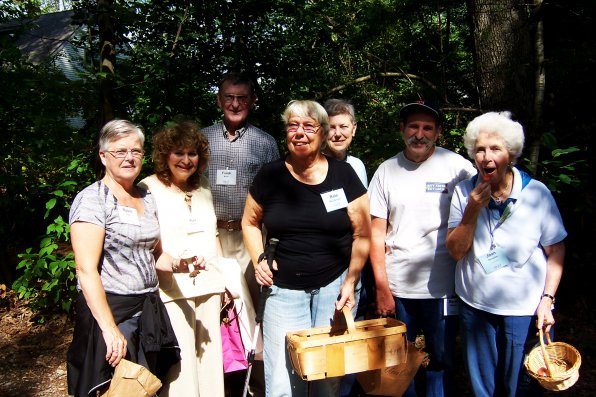Want to go hunting for wild mushrooms to eat? Here is some good advice: Have adequate knowledge to correctly identify edible mushrooms, or go mushrooming with someone who does. In early September, I went on a mushroom foray sponsored by the Osher Lifelong Learning Institute of Concord with our guide, Reta MacGregor, a mushroom expert. When MacGregor was a teen, she was given a book about mushrooms. This started her on a path to study and collect mushrooms, which she has been doing for the last 35 years. There were eight of us in the group, and we all foraged for wild mushrooms in the woods of Livingston Park in Manchester.
According to the National Audubon Society Field Guide to Mushrooms: “Mushrooms are among the most mysterious life forms.” In Greek mythology, mushrooms were said to come from Zeus' lightning because they appeared after rain storms.
In Roman times, mushrooms were famous as a gourmet delicacy for royalty. They were called the food of the gods and were said to have supernatural powers. Recipes for their use have been found in ancient Greek and Roman literature.
Among the many thousands of mushrooms worldwide, only about 30 have been associated with fatalities. An additional 50 species can contain significant toxins. Wilmont Robinson, a registered Maine guide, said “Although only a few species of poisonous mushrooms will cause death, most poisonous ones will only make you so violently ill you may wish you are dead.”
There are many misleading myths about identifying wild mushrooms, some of which are:
All poisonous mushrooms are brightly colored and will taste bad. (Not true.)
Insects and animals will avoid toxic mushrooms. (Not true.)
Poisonous mushrooms will blacken silverware. (Not true.)
All mushrooms are safe to eat if boiled. (Not true.)
These and other erroneous folklore can misguide people into eating toxic mushrooms, with tragic results. Persons coming to our community from other countries can bring with them ideas about wild mushrooms that do not apply to our geographic area.
The majority of fatal poisoning from eating mushrooms can be attributed to just a small number of species in the genus, Amentia, one of which is pure white and is called the “Angel of Death.”
On our mushroom field trip we found more than 25 different kinds of mushrooms. In advance of the outing, MacGregor had prepared a pastry with wild chanterelle mushrooms that are sometimes called little goblets because they are dainty and shaped like a cup. We all enjoyed her delightful gourmet dish with confidence because we knew that the mushrooms had been collected by MacGregor, an expert mycologist.









